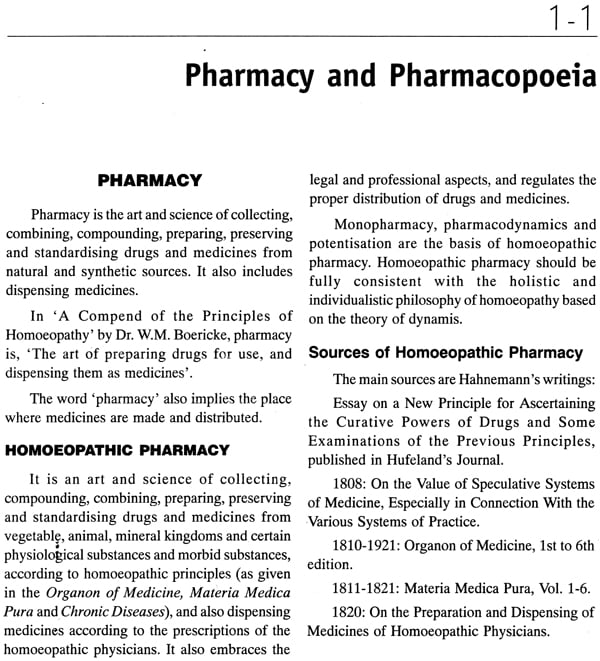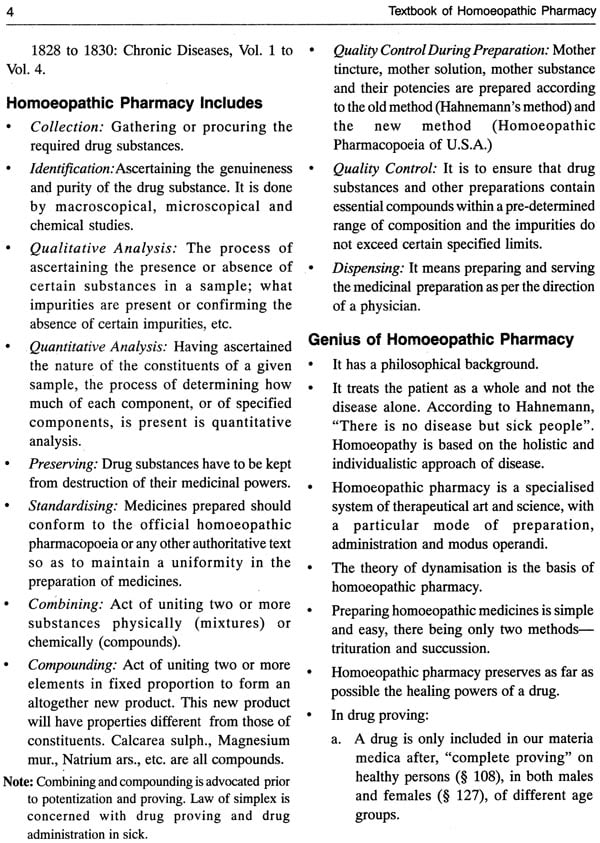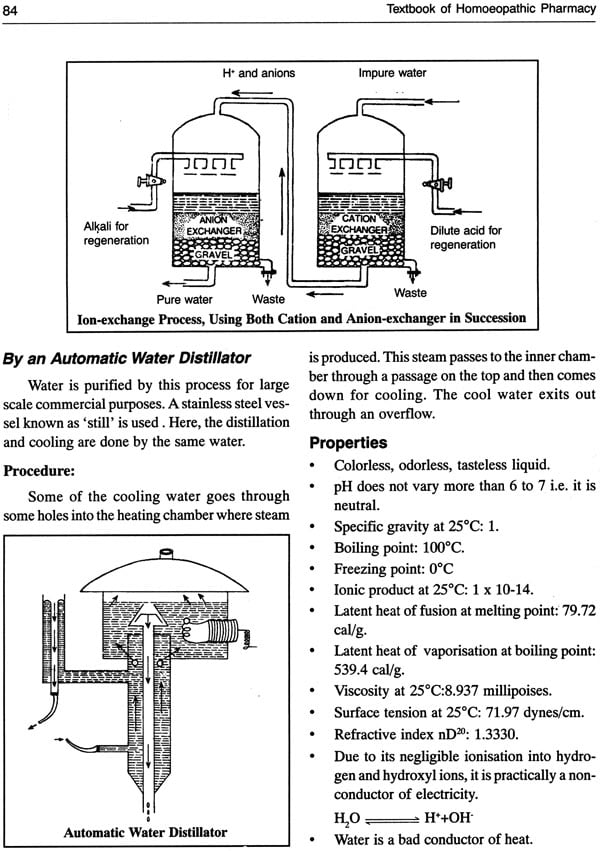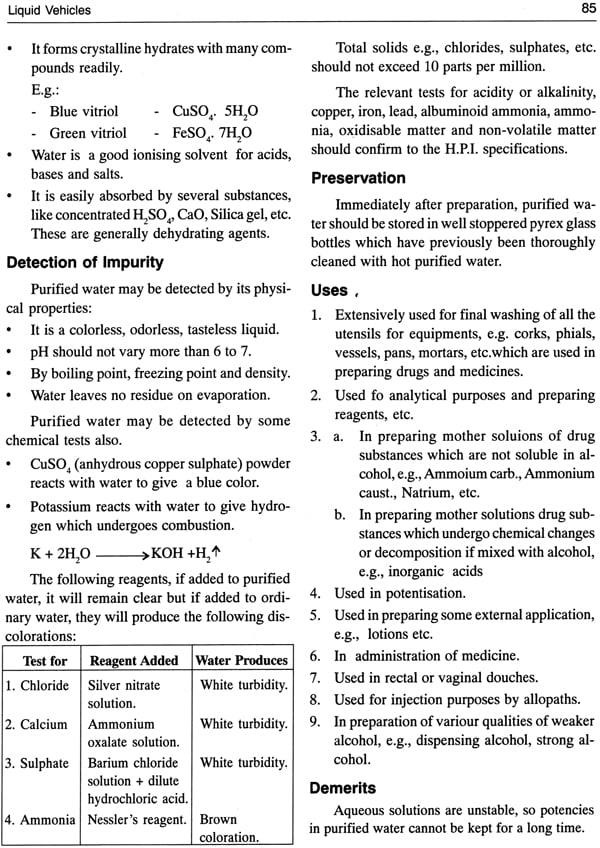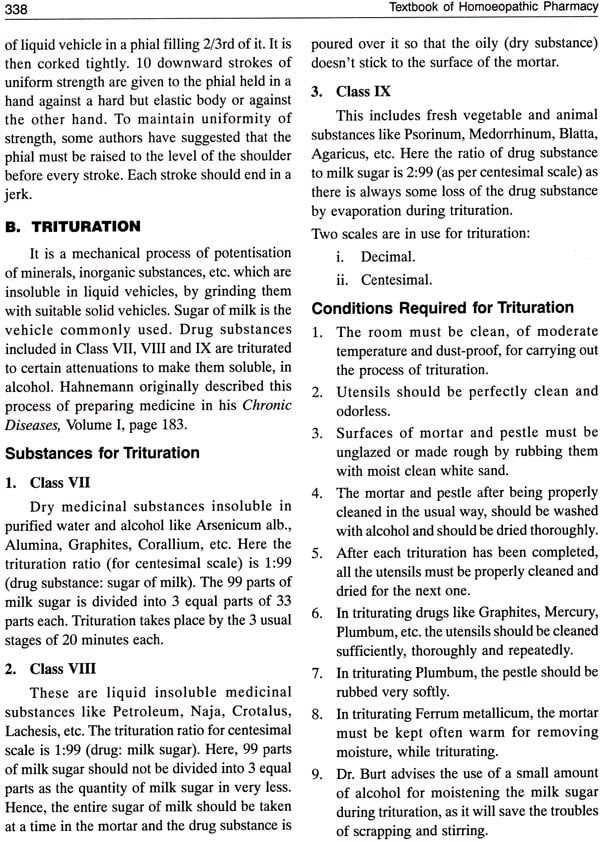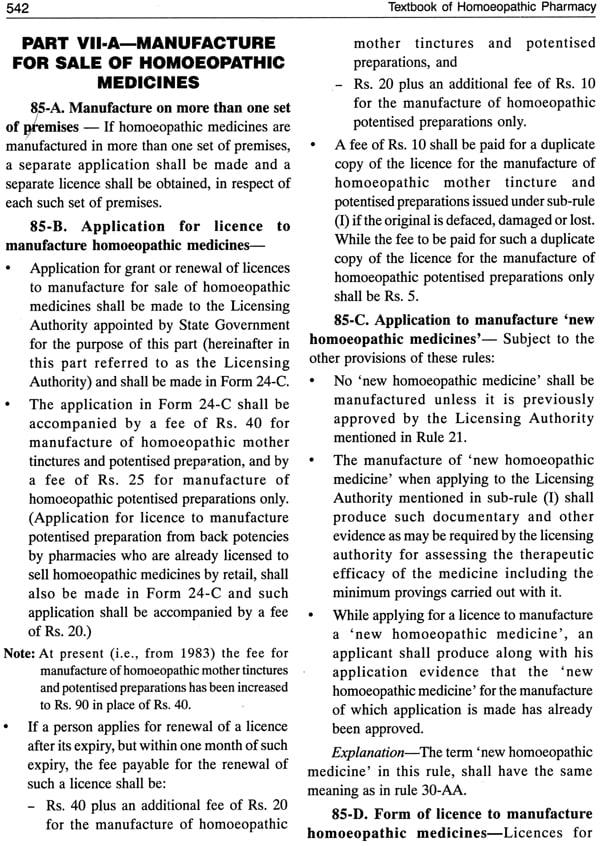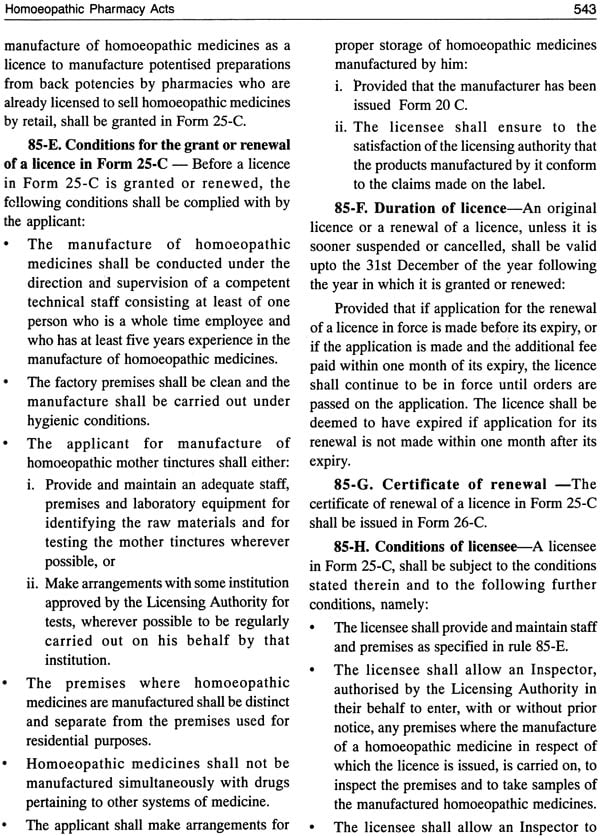
Augmented Textbook of Homoeopathic Pharmacy
Book Specification
| Item Code: | NAS533 |
| Author: | D. D. Banerjee |
| Publisher: | B. Jain Publishers (P) Ltd |
| Language: | English |
| Edition: | 2021 |
| ISBN: | 9788131902912 |
| Pages: | 688 (35 B/W Illustrations) |
| Cover: | PAPERBACK |
| Other Details | 9.50 X 7.50 inch |
| Weight | 950 gm |
Book Description
Homoeopathy was founded by Dr. Christian Frederick Samuel Hahnemann. He was born in Meissen, Germany in 1755 and died in Paris in 1843. The experimental and practical foundation for homoeopathy was carried out between the years 1790 and 1810.
In the year 1790 he observed that real cures were effected by drugs which produced similar symptoms on healthy human beings. For six years he continued his studies, till in 1776, he wrote about fifty drugs and an essay suggesting a new way of ascertaining the specific curative power of a drug. It was published as an article in Hufelands Journal under a title "An Essay on a New Principle for Ascertaining the Curative Power of a Drug."
Hahnemann’s fundamental propositions peculiar to homoeopathy are:
(a) The action of drugs is demonstrable by observing the subjective symptoms, objective symp- toms and pathological changes that occur when they are administered to healthy human subjects.
(b) The action of drugs so observed on healthy human beings constitutes their therapeutic potentiality with respect to the sick individual.
(c) A similarity between disease processes in a particular individual and the known effects of a particular drug on healthy human beings (known as drug proving of homoeopathy) will lead to its successful application in the treatment of the diseased individual (i.e. to bring a change in the altered dynamis).
(d) Conception of dynamis (vital force active—driving force) is applicable in respect to health, disease and cure.
These propositions are fully expressed in the Law of Similars, which is the foundation of homoeopathic practice. It is said as "Similia Similibus Curentur " let likes be treated with likes. The Law of Similars is a natural law. The term homoeopathy is in fact, derived from the Greek, meaning like suffering.
In the early days of homoeopathy, the physician would have been expected to prepare his own medicinal remedies. Now-a-days, with the increased demand for homoeopathic remedies, we obtain our remedies from the properly trained homoeopathic pharmacists.
**Contents and Sample Pages**
